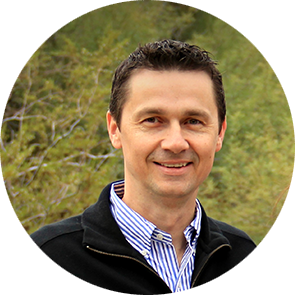The controversy surrounding PLAN International Finland’s award-winning campaign “Maternity Wear for a 12-year-old” highlights an uncomfortable truth: international aid efforts often reproduce the very hierarchies they claim to dismantle. By staging images of pregnant African girls through the lens of Western fashion photography, the campaign sought to generate sympathy and financial support. Yet in doing so, it reinforced long-standing patterns of paternalism, where African children are presented as passive victims awaiting rescue by benevolent Europeans.
This mode of representation is not new. From colonial-era missionary appeals to contemporary NGO fundraising drives, the West has repeatedly framed the Global South through spectacles of suffering. In this framing, black and brown bodies are stripped of agency and complexity, their lives narrated primarily for the emotional consumption of Western audiences. What results is not solidarity but a one-way gaze: the Western viewer sees herself as saviour, while the subject is cast as helpless.
White Saviourism as a Colonial Legacy
The PLAN campaign exemplifies what postcolonial scholar Gayatri Spivak famously described as the trope of “white men saving brown women from brown men.” While in this case the saviour is not a colonial governor but a humanitarian NGO, the logic remains intact. The young African girl is placed at the center of the image but denied her voice; instead, Finnish celebrities and aid workers speak on her behalf. The campaign’s emphasis on bodily curves, even in the case of children, further invokes a troubling eroticisation that recalls colonial fantasies of racialised sexuality.
What is erased in this narrative are the structural conditions that make child pregnancy common in parts of Southern Africa: entrenched poverty, lack of access to education, weak health systems, and unequal global economic relations. By reducing these realities to a spectacle of pity, the campaign hides the deeper North-South dynamics that perpetuate inequality—including the very global order in which Finland itself is embedded.
The Economics of Pity
It is crucial to recognise that these campaigns do not merely reflect stereotypes; they are structured to generate funds. The image of the suffering child functions as a moral currency, mobilising guilt in the Global North to elicit donations. In this sense, pity becomes commodified. The black girl’s body is transformed into a site of fundraising, while the Western donor receives not only the satisfaction of helping but also the reassurance of moral superiority.
This is where the white saviour mentality reveals its double edge: it purports to address inequality while simultaneously reproducing a hierarchy in which the West is positioned as the active agent and the South as the passive recipient. The very act of “saving” becomes a performance of power, one that reinforces Finland’s image as benevolent while rendering invisible its complicity in global economic structures that sustain inequality.
Beyond Individual Consent
Defenders of the PLAN campaign have pointed to the consent of the girls and families involved, as though individual agreement absolves the campaign of criticism. Yet this response misses the point. Representation is not only about personal permission but about collective imagery, cultural patterns, and global power relations. Even when individuals agree to participate, their images may still be used in ways that reproduce harmful stereotypes and perpetuate systemic racism.
Thus, the debate must move beyond individual consent toward a structural interrogation: who gets to speak, who is represented, and on whose terms? Consent cannot substitute for accountability in the way communities are portrayed, particularly when those portrayals will circulate globally and shape how entire regions are understood.
Toward Ethical Representation
The alternative is not to silence the realities of child pregnancy or poverty but to approach them differently. Campaigns can highlight the agency of African actors, foreground local voices, and situate problems within their broader socio-economic and political contexts. Rather than framing girls as helpless victims, organisations could amplify stories of resilience, collective struggle, and systemic critique.
Moreover, aid campaigns should avoid centering Western celebrities as spokespersons. While their involvement may attract media attention, it recenters the narrative around white visibility rather than African experience. Ethical representation requires humility: the recognition that solidarity does not mean speaking for others but listening to and amplifying their voices.
Building Solidarity, Not Saviours
Challenging the white saviour mentality requires a shift in how we conceptualise aid and global solidarity. Instead of reinforcing one-way flows of pity and money, we must imagine reciprocal relationships rooted in respect and equality. This means acknowledging the structural ties that bind Finland and other Northern countries to the conditions in the South—whether through trade, development policies, or the legacies of colonialism.
True solidarity would involve not only supporting education in Southern Africa but also interrogating the global economic systems that produce poverty and inequality. It would mean recognising African children not as symbols of tragedy but as part of complex societies with voices, agency, and futures of their own.
Conclusion: From Saving to Sharing Struggles
The criticism raised against PLAN International Finland’s campaign is not simply about one image or one NGO. It speaks to a broader challenge: how to dismantle deeply ingrained narratives that place the West at the center of global morality. The white saviour mentality, no matter how well-intentioned, perpetuates the very asymmetries it claims to address.
To move forward, Finnish civil society and international NGOs must engage in critical self-reflection. Can they create campaigns that mobilise support without reproducing stereotypes? Can they decenter the Western gaze and instead highlight African-led initiatives? Most importantly, can they transform the logic of aid from paternalism to partnership?
If the answer to these questions is yes, then perhaps the future of international solidarity will be one not of saving, but of shared struggle toward justice and equality.
